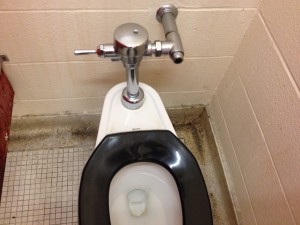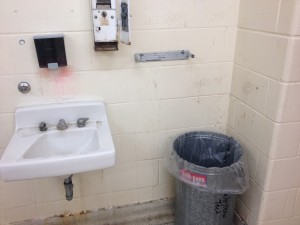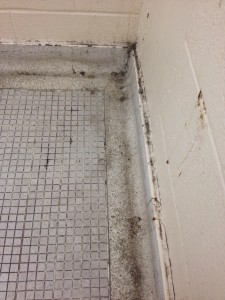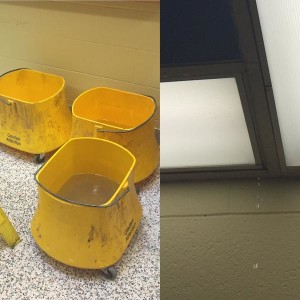Fix Our Schools often hears from both parents and students about how disgusting the washrooms can be at TDSB schools. Some parents say their children actually refuse to go to the washroom while at school. Looking at these photos, one can understand why! Would you go to the washroom if it looked like this?

Despite excellent efforts by caretakers to keep these washrooms clean and useable, with the current funding allocations by the provincial government, the photos you see here are the end result.
Consider a 100-year old school that is also overcapacity by 200 students (there are 146 TDSB schools that are overcapacity). No extra funds are allocated for caretakers at that school to deal with the extra mess created by those 200 extra students. No additional funds are provided to account for the fact that old buildings are harder to clean than new ones (the  caretakers at Runnymede P.S. painstakingly polish the 99-year old linoleum floors and, although we know they are the cleaner for their efforts, the floors really don’t look much different than they did before!) So this blog post is certainly not intended to point fingers at caretakers who work hard and take pride in the important role they play in our children’s schools.
caretakers at Runnymede P.S. painstakingly polish the 99-year old linoleum floors and, although we know they are the cleaner for their efforts, the floors really don’t look much different than they did before!) So this blog post is certainly not intended to point fingers at caretakers who work hard and take pride in the important role they play in our children’s schools.
This blog post is meant to highlight the fact that these washrooms are, indeed, disgusting and surely to goodness our children deserve to have washrooms in their place of learning that are well-maintained, clean and USEABLE!
The work that would need to be done to bring these washrooms to a USEABLE state is not  included in the TDSB’s $3.3-billion repair backlog we hear about all the time. The shocking $3.3-billion repair backlog only includes really serious work to be done on our children’s schools – such as fixing leaking roofs, replacing broken boilers and addressing structural concerns. So unless Kathleen Wynne’s provincial government works with school boards to find new funding solutions for public schools, many washrooms will continue to be disgusting.
included in the TDSB’s $3.3-billion repair backlog we hear about all the time. The shocking $3.3-billion repair backlog only includes really serious work to be done on our children’s schools – such as fixing leaking roofs, replacing broken boilers and addressing structural concerns. So unless Kathleen Wynne’s provincial government works with school boards to find new funding solutions for public schools, many washrooms will continue to be disgusting.

